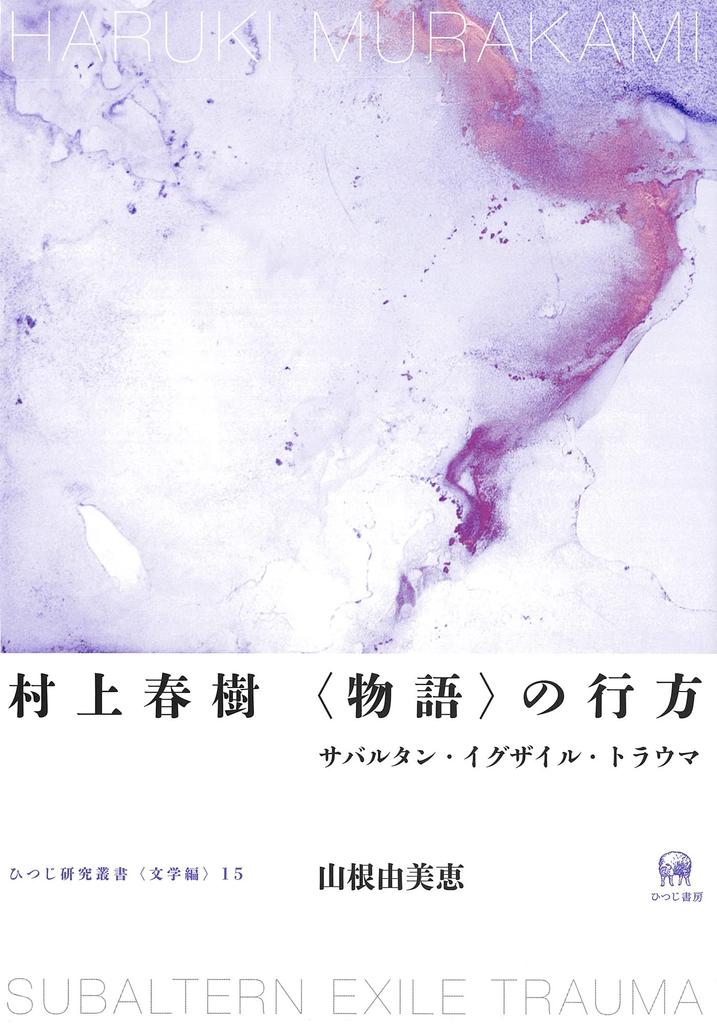This book aims to provide an overall picture of Murakami Haruki's literature and its evolution from the time he left Japan and began his "exile" (leaving his hometown) to his latest works. While Murakami is currently often described as a writer of "world literature," there was a time when he saw himself as a homeless person and sought to understand himself. This "exile" consciousness is used to illuminate the texts and present new aspects of Murakami's literature. Another notable feature of this book is its focus on the "subaltern" (lower, subordinate, secondary beings) in Murakami's literature, and its capture of the critical nature (and its limitations) of Murakami's literature.
Table of Contents
Introduction
Part 1: Literature of the "Exile" (Leaving Home) Period - 1988-1996
Chapter 1: Stagnation and Revival - The Wanderings of "Exile"
Section 1: The Wanderings of "Exile" - "Dance Dance Dance"
Section 2: Resurrection as a Writer - "TV People"
Chapter 2: "Rejecting Women" - A Look at the "Subaltern"
Section 1: The Dark Side of the "Rejecting Woman" - "Folklore of Our Time: Prehistory of Advanced Capitalism"
Section 2: Izumi, the "Rejecting" and "Destructive" Woman - "South of the Border, West of the Sun"
Chapter 3: Recovery from Matrophobia Trauma - A Look at the "Subaltern"
Section 1: The "Mother" Preventing a Wife from Independence - "Lederhosen" and "Sleep"
Section 2: Kumiko: Beyond Matrophobia - "The Wind-Up Bird Chronicle"
Section 3: Nutmeg Cinnamon: Recovering from "Secondary Traumatization" and "Cross-Generational Trauma" - "The Wind-Up Bird Chronicle" 1
Chapter 4: The Collection of Short Stories - "The Lexington Ghost" and "The Work of Mourning"
Section 1: The Method of "Ambiguousness" - "The Lexington Ghost"
Addendum: The Tragedy of Discovering True Feelings - "The Green Beast"
Section 2: The Bottom of the Collection - "Silence"
Section 3: Stories of Absolute Loneliness - "Tony Takitani" and "The Ice Man"
Section 4: The Process of "Recovering from Loneliness" - "The Seventh Man" and "The Blind Willow and the Sleeping Woman"
Part 2: Haruki Murakami's Formative Narratives - 1997-2019
Chapter 1: The Potential of the "Subway Sarin Attack" Motif - A Look at the "Subaltern" 1
Section 1: Tsune Henmi's "Boiled Egg" - The Sarin Attack from the Perspective of an Encounterer
Section 2: Haruki Murakami's "Underground" - The Discovery of Sarin Victims and the "Work of Mourning"
Section 3: Kiyoshi Shigematsu's "Satsuki Dankei" - The Story of an Indirect Sarin Victim
Section 4: Seishu Hase's "9/11 Club" - The Problem of "Tertiary Victimization" (Family)
Section 5: Hiromi Kawakami's "Water Voice" - The Potential of the Sarin Victim Motif
Chapter 2: The Path of the "Story" - Haruki Murakami's Light, Shadow, and Light
Section 1: The Reborn Life of the "Survivor" - "Kafka on the Shore"
Section 2: The Possibility of Deconstructing Aum/The Image of the Guru and the Restoration of "Family" - "1Q84"
Section 3: Metatextuality and "Post-Disaster Literature" - "Killing Commendatore"
Section 4: When the Stage Play Surpasses the Original Work - Representations of "War" in the Stage Play "Kafka on the Shore"
Afterword
Major Texts Used
List of First Appearances
Index




















![Moderní japonská smrt japonského pálení knih [Dotisk, Překlad] (Knihy GHQ)](https://img.joomcdn.net/a5e50d8ed4633cae808acde83bf806fe83a17ba3_68_100.jpeg)







